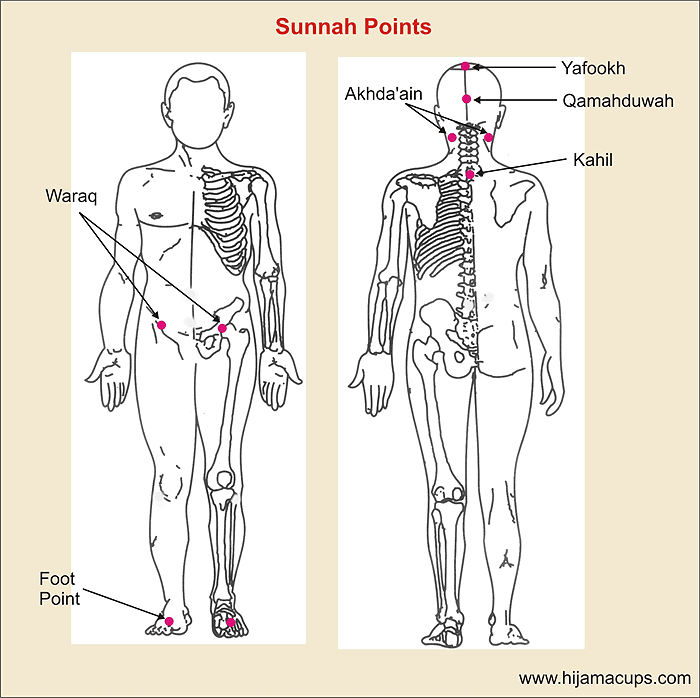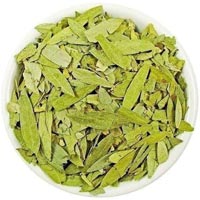WHAT IS CUPPING (HIJAMA) THERAPY?
- Cupping therapy (hijama) is a scientific treatment.
- Cupping therapy (hijama) is based on the principles of energy, production, flow and regulation.
- Energy mechanics is best explained in energy medicine.
- Energy medicine, systems and icons are explains in constitutional medicine.
- Constitutional medicine is based on the concept and scientific fact that 96% of human body is made up of 4 major elements
Types of Hijama / Bloodletting
There are a number of different methods and types of bloodletting and while the therapist should know in detail which method is best, based on the patients health, the presenting ailment and general constitution, as well as geographic, seasonal and climatic factors, the patient should also be aware of these differences.
Hijama in the condition of strength
The simplest method of Hijama is that used for general health promotion and the Nabi (SAW) used the most common method. In this type of Hijama there is no serious complaint by the patient that would warrant a special type of Hijama or the use of “special” Hijama points other than the standard poirits on the back, neck or head. This is traditionally termed as Hijama-bi-Sihhat (Hijama in the condition of health), many also refer to it as “sunnah cupping”. Both terms are not correct however as the Rasul of Allaah (SAW) had cupping done both in health and as a treatment for particular pains and ailments, and* it is also rare to find someone nowadays with absolutely no illness. I prefer the term Hijama in strength, referring to performing Hijama for someone who is of general good health and strength.
Such a patient may however complain of general symptoms such as a feeling of sluggishness, tiredness etc, they may also have a regular habit of doing Hijama and are aware of the benefits it has for them personally, or they are trying this method of health preservation for the first time under recommendation from their friends or acquaintances. Their general health is good, and very importantly their pulse is strong indicating a healthy amount of blood and also a good amount of heat in the blood. They may also be suffering from a constitutional blood or heat excess as is common in hot climates.
If the pulse is weak or deep then this type of Hijama is not indicated as it means that there is deficient blood or the heat of the body is internal and not in the exterior parts of the body.
In this type of Hijama care is taken to observe the rules of Hijama with regard to the condition of the patient, as well as the season, climate, day of the lunar month and time of the day in which Hijama is performed as this greatly influences the nature of blood that will be removed. Not observing these and performing this type of general Hijama outside of its recommended times will not result in any benefit for the patient and will very often result in long term harm for the patients health. This may not be apparent immediately after the procedure, but will be noticed in the months and even years to come afterward.
When applying Hijama in the condition of strength the areas being cupped are standard, these are mentioned in the Ahadeeth: Hadhrat Abu Kabsha (Radhiallaahu Anhu) narrates that Rasulullaah (Sallallaahu Alayhi Wasallam) used to undergo cupping on the head and between his shoulders and he used to say, ‘Whosoever removes this blood, it will not harm him that he does not take any other medical treatment.’ (Mishkat p. 389)
From examining the various Ahadeeth and by consensus of those experienced practitioners of Hijama the areas used in this general form of Hijama are.

- The area between the shoulder blades, most commonly in line with the inferior end of the scapula which is in line with the 7th thoracic vertebra. Sometimes other points lateral to the spinal column between the spinouts processes of the 6th to 9th thoracic vertebrae are used. This particular area is the best for performing general Hijama as it is the area where toxins and impurities in the blood accumulate and stagnate especially around the 17th. 19th and 21st of the month. In Traditional Chinese Medicine this point is regarded as the meeting point of the blood and is used for all blood disorders whether due to deficiency or excess.
- The occipital area of the neck in the recesses formed between the upper portion of the sternocleidomastoid and the trapezius muscles. This is in the region of a commonly used acupuncture point called Feng Chi, which means “wind pool”. It is believed that many pathogens enter the body at this area and that is why it is recommended to cover this area when it is cold or windy. Treating this area is helpful in resolving a number of common ailments of the head and neck, including headache, vertigo, pain/stiffness of neck, blurry vision, red/painful eyes, tinnitus, nasal obstruction, common cold, and rhinorrhea (runny nose, nasal discharge associated with allergies or hay fever or common cold). It’s also very useful for insomnia, and tends to have a relaxing and balancing effect upon the nervous system.
- On the head in the midline, the exact point is normally directly above the apex of the ear as in the diagram below: In Traditional medicine this point corresponds with the acupuncture point called Bai Hui, meaning a hundred convergences and is the meeting point of all the yang energy of the body. It is commonly used to treat all mental, emotional disorders, but also useful for headaches, epilepsy, neurological and endocrine disorders.
- On the anterior aspect of the foot in a depression distal to the junction of the 2nd and 3rd metatarsal bones. This area is traditionally used to treat swelling, headache, dizziness / vertigo, abdominal pain, bloating, constipation. It can also aid groundedness and focus and treat ADD /ADHD, mania, restlessness, palpitations and epilepsy.
In women the same areas are used except for the Hijama point on the head but the quantity of blood removed is less. Note that women are not in need of regular Hijama as they do release blood through the menses, if they have experienced menopause then it is fine to do as long as they are still strong and not suffering from blood deficiency in which case one must observe the rules of performing Hijama in illness.


